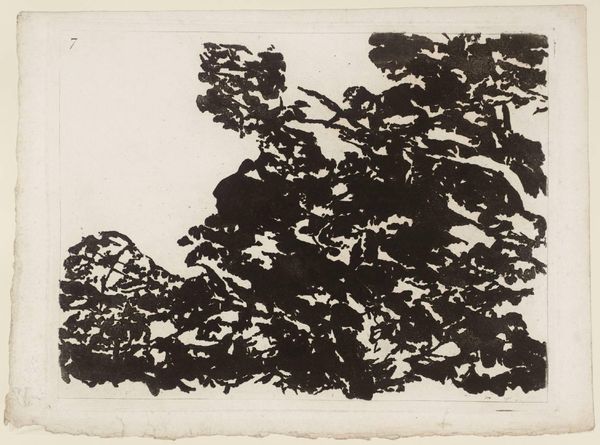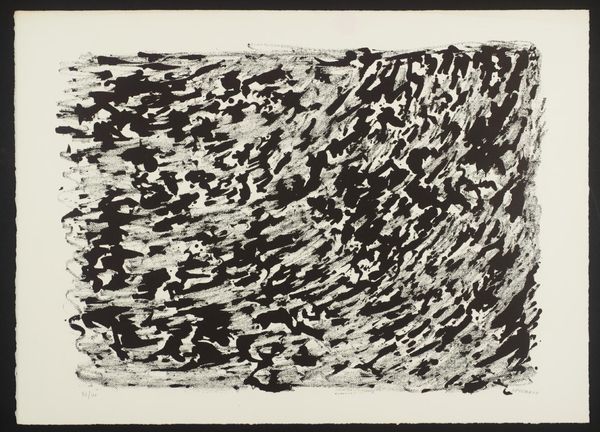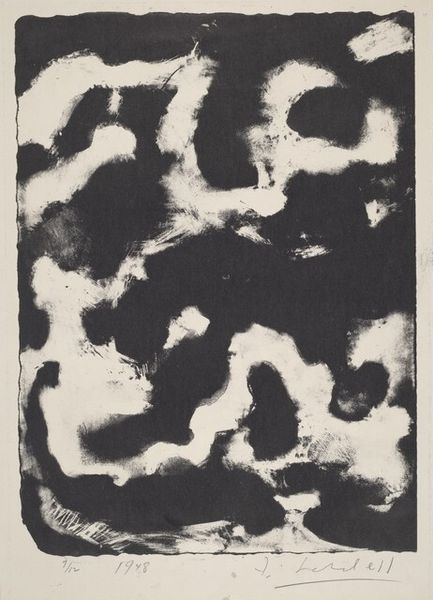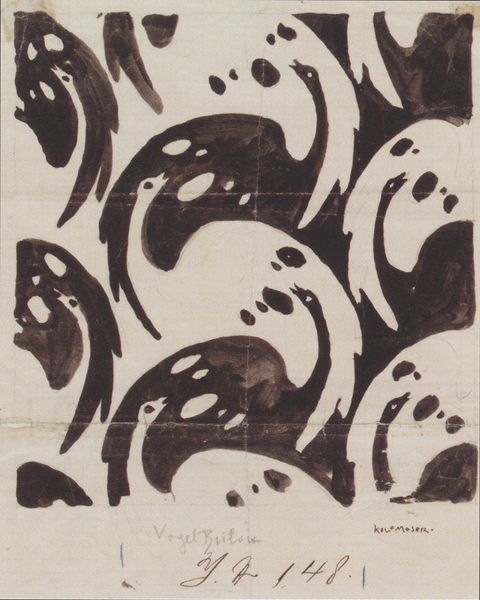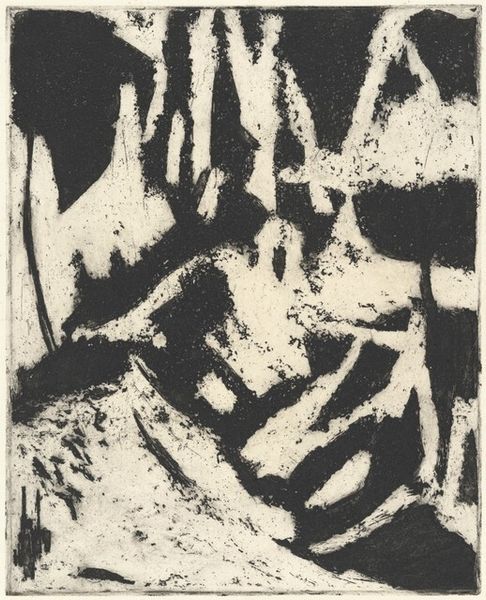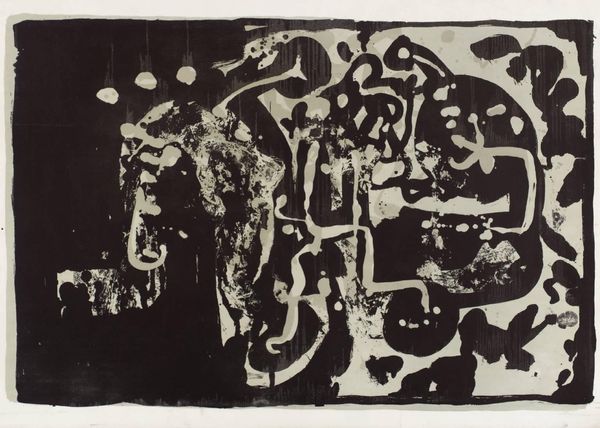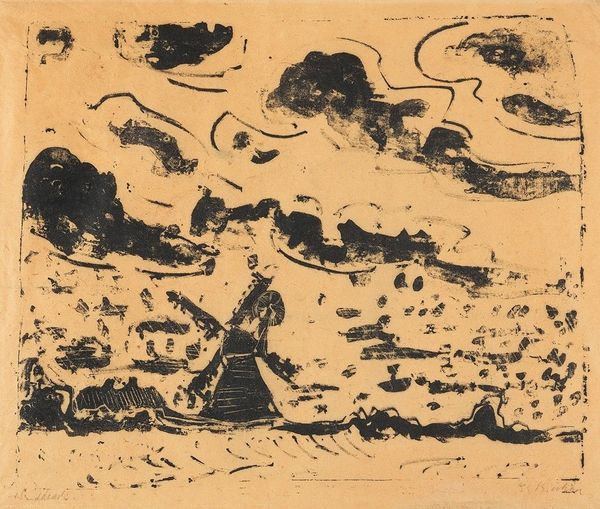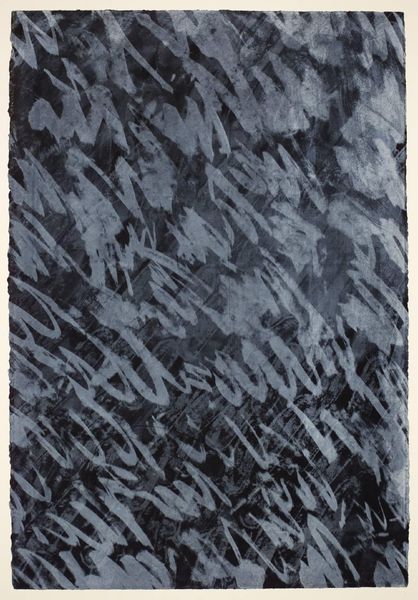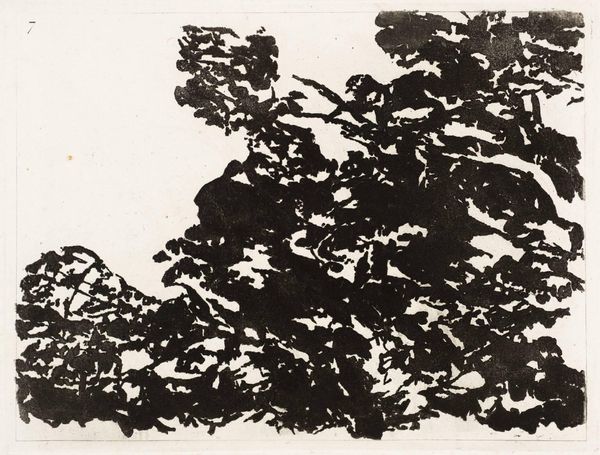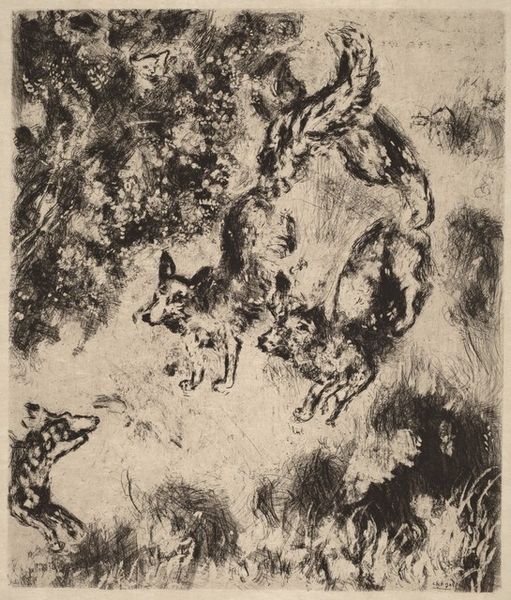
print, woodcut
#
abstract expressionism
#
organic
# print
#
german-expressionism
#
possibly oil pastel
#
organic pattern
#
expressionism
#
woodcut
#
abstraction
#
abstract art
Dimensions: plate: 37.6 × 57.7 cm (14 13/16 × 22 11/16 in.) sheet: 46.6 × 64 cm (18 3/8 × 25 3/16 in.)
Copyright: National Gallery of Art: CC0 1.0
Curator: We are looking at Wilhelm Morgner's "Acker mit Weib" from 1912, which translates to "Woman in a Field". It is an expressionistic woodcut. What is your initial take on it? Editor: Immediately, I am struck by its rough, almost violent, contrasts. The black ink aggressively carves out the shapes, making the whole piece feel agitated. The light areas almost seem under attack. Curator: I find that reaction intriguing. Notice the rhythmic repetition of the gouges, forming patterns that oscillate between recognizable forms and complete abstraction. How does that play into your interpretation? Editor: For me, that roughness speaks volumes about the labour involved, the physical exertion. Look at the artist grappling with the wood, imposing the image onto it. There’s a raw materiality there that I connect with. It evokes a sense of the hard labor in the fields and how the labor transforms the body. Curator: Indeed. Yet, there's a push and pull at play. The abstraction seems to distance us from the reality of agricultural labor. Consider the German Expressionist movement. This blurring serves to heighten emotional intensity and to reject traditional modes of representation. Editor: Precisely. We have to consider Morgner’s active carving, an engagement with a traditional medium of the working classes but bent towards an artistic impulse. What looks like a simple composition belies the whole material process of transferring labor. Curator: The stark black and white emphasizes the formal tension. It’s the interaction, the balance between these contrasting shapes, which imbues it with an unnerving energy. The viewer's eye jumps restlessly around the piece trying to resolve an image out of a mass of fractured components. Editor: I wonder what field worker contemporaries would have thought of Morgner’s interpretation of labour? Would they relate more or less? Curator: Interesting question. It speaks to art’s enduring ability to act as both reflection and interpretation. Thank you. Editor: Thank you, that material perspective shifted my viewpoint entirely.
Comments
No comments
Be the first to comment and join the conversation on the ultimate creative platform.
